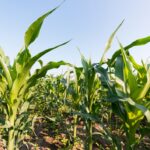Millet, a resilient and nutritious grain, holds immense agricultural potential in South Africa, offering a valuable source of food, feed, and income for farmers across the country. As interest in millet cultivation grows, farmers are seeking innovative techniques to enhance both the quality and yield of their millet crops. In this article, we’ll explore various strategies and practices that farmers can employ to optimize the production of millet in South Africa.
1. Variety Selection:
Selecting the right millet varieties is crucial for achieving optimal yield and quality. Farmers should choose varieties that are well-suited to local growing conditions, climate, and soil types. Factors to consider include yield potential, disease resistance, drought tolerance, and grain quality characteristics such as size, color, and nutritional content.
2. Soil Preparation and Fertility Management:
Proper soil preparation is essential for maximizing millet yields. Farmers should conduct soil tests to assess nutrient levels and pH, and apply appropriate fertilizers and soil amendments to optimize soil fertility. Incorporating organic matter, such as compost or manure, can improve soil structure, water retention, and nutrient availability, leading to healthier and more productive millet plants.
3. Optimal Planting Practices:
Timing and spacing are critical considerations for successful millet production. Planting should coincide with the onset of the rainy season to ensure adequate soil moisture for germination and early growth. Farmers should follow recommended planting densities and row spacing to optimize light interception, airflow, and nutrient uptake, promoting uniform plant growth and maximizing yield potential.
4. Weed Control and Pest Management:
Weed competition and pest damage can significantly reduce millet yields if left unmanaged. Farmers should implement integrated weed management strategies, including cultural practices, mechanical cultivation, and judicious herbicide use, to suppress weed growth and minimize yield losses. Similarly, monitoring for pests and implementing timely control measures, such as biological control agents or insecticides, can help protect millet crops from damage and optimize yield potential.
5. Irrigation and Water Management:
Efficient water use is critical for millet production, particularly in regions prone to drought or water scarcity. Farmers should adopt irrigation practices that maximize water use efficiency, such as drip or sprinkler irrigation, to deliver water directly to the root zone and minimize evaporation. Additionally, implementing water-saving techniques such as mulching, rainwater harvesting, and conservation tillage can help conserve soil moisture and sustain crop growth during dry periods.
6. Disease Prevention and Control:
Disease outbreaks can pose a significant threat to millet crops if left unchecked. Farmers should implement proactive disease prevention strategies, such as crop rotation, sanitation, and seed treatment with fungicides, to minimize the risk of infection. Monitoring for signs of disease and implementing timely control measures, such as fungicide application or resistant cultivars, can help mitigate the spread of pathogens and protect millet quality and yield.
7. Harvesting and Post-Harvest Management:
Harvesting millet at the optimal maturity stage is essential for maximizing yield and quality. Farmers should monitor crop development and harvest when grain moisture levels reach the recommended range for storage. Proper handling, drying, and storage practices are essential for preserving grain quality and minimizing losses due to spoilage, pests, or moisture damage.
Enhancing the quality and yield of millet in South Africa requires a combination of strategic planning, innovative techniques, and sound agronomic practices. By selecting suitable varieties, optimizing soil fertility, practicing optimal planting techniques, implementing effective weed, pest, and disease management strategies, and adopting efficient irrigation and water management practices, farmers can maximize millet yields while ensuring crop quality and sustainability. Through continuous learning, adaptation, and collaboration, South African farmers can unlock the full potential of millet production and contribute to food security and economic prosperity in the region.







